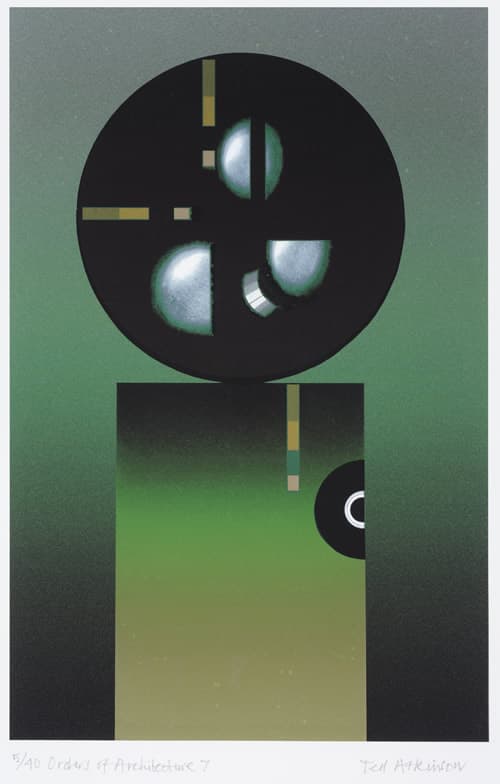
Ted (Edward) Atkinson 1928 – 2016
Ted Atkinson, who died on 12 February 2016, was born in Liverpool 8. In 1939 he was a scholarship boy at Oulton High School, an inner city grammar school in Clarence Street, where it was often an adventure just to reach the school after nights of bombing during the Second World War. In 1944 he enrolled on the Fine Art Course at the Liverpool School of Art. Here, he studied sculpture under Karel Vogel, and forged life-long friendships with Roy Cross and Josh Kirby who eventually, like Ted, moved to East Anglia. In 1947 Ted was called for National Service in the Army, serving mostly in Germany. Afterwards, he returned to Liverpool, resuming his course at the School of Art and in 1951 he went on to study Sculpture at the Slade School of Fine Art in London alongside Reg Butler and Henry Moore.
After leaving the Slade he married and began teaching, firstly at Exeter College of Art within the sculpture department, and later at the University of Leeds and Coventry. Travelling between Exeter and Liverpool limited visits to family and friends so that in 1960 he left teaching to work as a full-time sculptor, spending half the year in a new, purpose-built studio in Wivenhoe, and the other half in a studio near Sefton Park, Liverpool. Having set up his studio in Wivenhoe, close to London, East Anglia became Ted’s base, and in 1967 he began teaching at Leeds College of Art, spending a very fruitful period commuting between there and the Essex and Liverpool studios. Much a part of the Liverpool 8 cultural scene in the sixties, Ted formed close friendships with such as Adrian Henri, Roger McGough, and George Melly. However, a move to Coventry College of Art in 1973 led to his spending most of his non-teaching time in Wivenhoe, and after the deaths of his mother in 1985 and his sister in 2005 his links with Liverpool declined.
The main body of Ted’s early work consisted of architectural commissions, with major public sculptures sited in Britain, Germany,
Holland, the USA and Japan. The Royal Academy regularly hung his works despite their size, and with Armitage, Caro, Chadwick, Frink and Moore he was one of six sculptors representing Britain at World Expo ’88 in Brisbane. The physical demands of sculpture led him to study printmaking at the Central School of Art in London, where he explored the mezzotint process, seeking to represent, manipulate and maintain three-dimensional qualities of solid forms in two-dimensional print. Ted developed his work through the use of computers, exploiting the developing possibilities of working in layers on the screen, producing works of great depth and subtlety; his award-winning work is held in the collections of institutions around the world.
Ted was a quietly spoken man, a striking figure in Wivenhoe as he did his daily shopping. For most of his life a bachelor, he was nevertheless a sociable man, an excellent cook and host, always enjoying a dinner party with his friends, with whom he could also share his great love of music. With Pam Dan, he was one of the last two surviving members of the Wivenhoe Arts Club which, with Roy and Jack Cross and others, he had helped to establish and which thrived in the seventies and eighties. Throughout his later life, Ted was troubled by a heart condition, but treatment allowed him to be active into his late eighties despite his denials of being in good health. He continued to work and innovate during this period, becoming bolder with his images and developing his skills as a ‘digital archivist’, as he described himself during this latter period of his career.
(Wivenhoe News Summer 2016)*
*Edited from an original text by Barnard Bennetto March 2016







